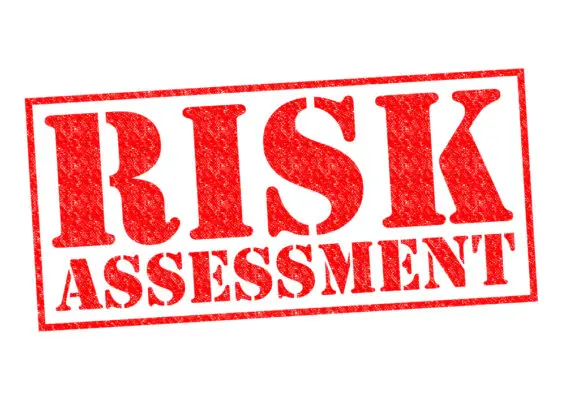A HIPAA Security Risk Assessment ensures compliance with the Health Insurance Portability and Accountability Act (HIPAA). This assessment aims to identify and analyze potential risks to the confidentiality, integrity, and availability of protected health information (PHI).
Healthcare organizations can proactively address vulnerabilities and implement safeguards to protect PHI from unauthorized access, use, or disclosure by conducting a thorough assessment.
Different types of risk assessments are available, including internal, external, and technical assessments, each focusing on specific aspects of HIPAA compliance.
This article provides an overview of what a HIPAA Security Risk Assessment entails, explores the various types of assessments, and answers frequently asked questions related to the process.
Additionally, a HIPAA risk assessment template and checklist are provided to assist healthcare organizations in comprehensively evaluating their security measures.

What is a HIPAA Security Risk Assessment?
A HIPAA Security Risk Assessment is a systematic evaluation of an organization’s potential vulnerabilities and threats to the confidentiality, integrity, and availability of electronic protected health information (ePHI), in order to identify and mitigate risks to comply with HIPAA regulations.
This assessment involves conducting a comprehensive risk analysis to determine the current security measures and their effectiveness. It also assesses the likelihood of threat occurrence and the potential impact on ePHI.
The assessment provides valuable insights into the level of risk an organization faces and helps prioritize corrective actions to enhance security standards. By identifying weaknesses and potential threats, organizations can implement appropriate safeguards and controls to protect ePHI and ensure compliance with HIPAA regulations.
Types of HIPAA Risk Assessments
This paragraph introduces the discussion on the different types of HIPAA risk assessments. These assessments are important tools to evaluate and identify potential risks to the security, breach, and privacy of protected health information (PHI).
Healthcare organizations can ensure compliance with HIPAA regulations and implement appropriate safeguards to protect patient data by conducting these assessments.
The different types of HIPAA risk assessments include:
- HIPAA Security Risk Assessment.
- HIPAA Breach Risk Assessment.
- HIPAA Privacy Risk Assessment.
Each assessment focuses on a specific risk aspect and helps healthcare organizations identify vulnerabilities and develop strategies to mitigate those risks.
HIPAA Security Risk Assessment
Conducting a comprehensive HIPAA Security Risk Assessment allows healthcare organizations to identify potential vulnerabilities and implement necessary safeguards to protect patient information.
A security risk analysis involves evaluating the risks and vulnerabilities associated with using, transmitting, and storing electronic protected health information (ePHI).
This assessment helps organizations identify potential risks, threats, and impacts that could compromise patient data’s confidentiality, integrity, and availability.
The results of the assessment guide the development of a risk management plan, which outlines the strategies and measures to mitigate identified risks.
The plan may include implementing administrative, physical, and technical security safeguards to prevent security incidents and ensure compliance with HIPAA regulations.
Organizations can continuously monitor and enhance their security posture by conducting periodic assessments to protect patient information from potential breaches and unauthorized access.
HIPAA Breach Risk Assessment
To evaluate the potential for breaches and unauthorized access to patient information, healthcare organizations must thoroughly analyze breach risks. This involves conducting HIPAA breach risk assessments, essential for identifying vulnerabilities and implementing appropriate security controls.
Here are four key aspects of conducting a breach risk assessment:
- Security assessments: Organizations must assess their current security policies and procedures to identify potential weaknesses or gaps in protecting patient information.
- Unauthorized disclosure: The risk assessment should evaluate the likelihood of unauthorized disclosure of Protected Health Information (PHI) and assess the potential impact on patients and the organization.
- Security controls: Evaluating the effectiveness of existing security controls is crucial to determine if they are sufficient in preventing breaches and unauthorized access.
- Breach statistics: Analyzing breach statistics and trends can provide valuable insights into breaches’ common causes and consequences, allowing organizations to prioritize risk mitigation efforts.
Through comprehensive breach risk assessments, healthcare organizations can proactively identify and address potential vulnerabilities to protect patient information and comply with HIPAA regulations.
HIPAA Privacy Risk Assessment
A thorough analysis of privacy risks in healthcare organizations is crucial for protecting patient information and compliance with regulatory requirements.
HIPAA privacy risk assessment plays a significant role in identifying and mitigating potential threats to patient privacy and confidentiality. This assessment evaluates the security requirements outlined by HIPAA for covered entities and their business associates, aiming to prevent unauthorized access to sensitive healthcare data.
Using a HIPAA privacy risk assessment, healthcare organizations can identify vulnerabilities, implement appropriate safeguards, and establish protocols to address any potential breaches.
This assessment allows organizations to proactively protect patient privacy, maintain compliance with HIPAA regulations, and safeguard against the risks associated with unauthorized access to healthcare information.
Implementing a HIPAA privacy risk assessment contributes to the overall security and integrity of healthcare organizations’ data systems.
HIPAA Risk Assessment FAQ
A HIPAA risk assessment systematically evaluates potential risks and vulnerabilities to the confidentiality, integrity, and availability of electronic protected health information (ePHI).
It helps organizations identify and mitigate risks to ensure compliance with HIPAA regulations. Conducting a HIPAA security risk assessment lies with the covered entity or business associate, who must assess their security measures and implement safeguards to protect ePHI.
There are different types of risk assessments for covered entities and business associates based on their specific roles and responsibilities within the healthcare industry. While covered entities are typically healthcare providers, health plans, and healthcare clearinghouses, business associates are individuals or organizations that perform functions or services on behalf of covered entities.
The specific requirements and scope of the risk assessment may differ for each entity type.
A HIPAA risk assessment focuses on identifying and evaluating potential risks to ePHI and implementing safeguards to mitigate those risks. It is a proactive measure to ensure compliance with HIPAA regulations.
On the other hand, a HIPAA compliance assessment evaluates an organization’s overall compliance with the HIPAA Privacy, Security, and Breach Notification Rules. It involves a comprehensive review of policies, procedures, and practices to ensure adherence to all relevant requirements.

What is a HIPAA risk assessment?
Conducting a HIPAA risk assessment allows organizations to comprehensively evaluate potential vulnerabilities and threats to sensitive patient information, instilling a sense of urgency and accountability in safeguarding the privacy and security of healthcare data.
This assessment is crucial for healthcare providers, as it helps identify areas of weakness and provides recommendations for implementing necessary security procedures.
A HIPAA risk assessment involves assessing risk levels associated with implementation specifications, such as physical, technical, and administrative safeguards.
It also helps covered entities and business associates identify privacy risks and develop mitigation strategies.
Using regular risk assessments, organizations can proactively identify and address potential risks, reducing the likelihood of a breach of PHI (Protected Health Information) and ensuring compliance with HIPAA regulations.
| Risk Level | Description |
|---|---|
| High | Potential risk that could result in significant harm or damage |
| Medium | Potential risk that could cause moderate harm or damage |
| Low | Potential risk that could cause minimal harm or damage |
| N/A | Not applicable or no risk identified |
| TBD | Risk level to be determined after further assessment |
Who is responsible for conducting a HIPAA security risk assessment?
The responsibility for conducting a HIPAA security risk assessment lies with the organization or entity that handles sensitive patient information.
According to the HIPAA Security Rule, covered entities and business associates must conduct a risk assessment process to identify and analyze potential security vulnerabilities.
This assessment is crucial to ensure compliance with HIPAA’s security requirements and to protect patient information from unauthorized access or breaches.
The risk assessment process involves evaluating the likelihood and impact of potential risks to the confidentiality, integrity, and availability of electronic protected health information (ePHI).
It requires a comprehensive and systematic approach to identify areas of potential weakness in the security program.
Conducting an annual risk assessment also helps organizations stay proactive in addressing emerging security threats and ensuring that their current projects align with the necessary safeguards to protect patient information.
Are there different types of risk assessment for Covered Entities and Business Associates?
When conducting a HIPAA security risk assessment, the responsibility lies with both Covered Entities and Business Associates.
Covered Entities are healthcare providers, health plans, and healthcare clearinghouses, while Business Associates are individuals or organizations that perform services for Covered Entities and have access to protected health information (PHI).
Although both are required to conduct a risk assessment, the process may vary slightly. Generally, risk assessments for Covered Entities and Business Associates involve identifying and analyzing potential security risks to PHI and implementing appropriate security measures to mitigate those risks.
Using these assessments, organizations can proactively identify vulnerabilities and take necessary steps to prevent a breach of PHI.
To better understand the different types of risk assessment for Covered Entities and Business Associates, consider the following:
- Scope: The risk assessment for Covered Entities may encompass a broader range of systems, processes, and personnel, as they are directly responsible for the security of PHI. On the other hand, Business Associates may focus on the specific services they provide to Covered Entities.
- Requirements: Covered Entities must comply with the HIPAA Security Rule, which outlines specific requirements for risk assessments. Business Associates, although not directly regulated by HIPAA, must conduct risk assessments as part of their contractual obligations with Covered Entities.
- Level of involvement: Covered Entities typically have internal resources to conduct risk assessments, while Business Associates may seek assistance from external experts or consultants.
What is the difference between a HIPAA risk assessment and a HIPAA compliance assessment?
One key distinction between a HIPAA risk assessment and a HIPAA compliance assessment lies in their primary focus and purpose.
A HIPAA risk assessment involves identifying and evaluating potential security risks that could lead to a breach of Protected Health Information (PHI). It aims to assess the vulnerabilities within an organization’s systems and processes that could compromise PHI’s confidentiality, integrity, and availability.
On the other hand, a HIPAA compliance assessment focuses on determining whether an organization complies with all the necessary HIPAA regulations and requirements.
It evaluates the organization’s adherence to administrative, physical, and technical safeguards, policies, and procedures outlined in the HIPAA Privacy and Security Rules.
HIPAA risk assessment template
Utilizing a standardized HIPAA risk assessment template allows organizations to evaluate potential vulnerabilities and ensure compliance with privacy regulations systematically.
This template is a valuable tool for security teams to identify and address compliance vulnerabilities.
Organizations can effectively assess their risk management strategy using a structured approach and identify improvement areas.
The template includes a comprehensive checklist covering all relevant regulatory requirements, ensuring no assessment aspect is overlooked.
Additionally, it facilitates a thorough gap analysis, helping organizations identify gaps between their current practices and the required standards.
This enables organizations to develop targeted action plans to address gaps and enhance compliance.
A HIPAA risk assessment template provides a consistent and efficient method for organizations to evaluate their HIPAA compliance and safeguard patient data.
Get The HIPAA Risk Assessment Checklist
When conducting a HIPAA risk assessment, it is essential to have a comprehensive checklist in place. This checklist serves as a guide to ensure that all necessary components are thoroughly evaluated. The checklist includes various aspects such as technical safeguards, administrative safeguards, and physical safeguards.
Technical safeguards involve implementing security measures to protect electronic protected health information (ePHI), such as encryption and access controls.
Administrative safeguards focus on policies and procedures that address the management of PHI, including workforce training and contingency planning.
Physical safeguards encompass the physical protection of PHI, such as access controls and video surveillance.
The checklist should also include a privacy assessment to evaluate the organization’s compliance with HIPAA privacy rules.
By utilizing a checklist, organizations can identify potential vulnerabilities and mitigate the risk of a breach of PHI.

Conclusion
A HIPAA Security Risk Assessment is a crucial step in ensuring compliance with HIPAA regulations. There are different types of assessments, including internal and external assessments, that organizations can use to identify potential risks to the security of protected health information.
Conducting regular risk assessments and addressing any vulnerabilities is important to protect patient privacy and security.
Organizations can streamline the assessment process and ensure comprehensive compliance with HIPAA regulations by utilizing a HIPAA risk assessment template and checklist.
Overall, conducting a HIPAA risk assessment is essential for maintaining patient information’s confidentiality, integrity, and availability.

Chris Ekai is a Risk Management expert with over 10 years of experience in the field. He has a Master’s(MSc) degree in Risk Management from University of Portsmouth and is a CPA and Finance professional. He currently works as a Content Manager at Risk Publishing, writing about Enterprise Risk Management, Business Continuity Management and Project Management.

